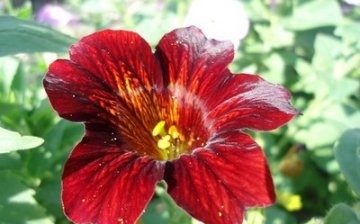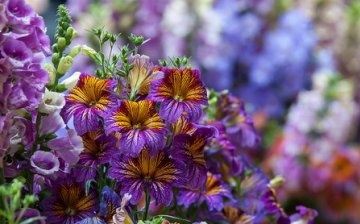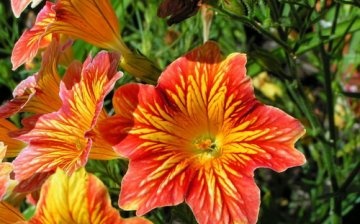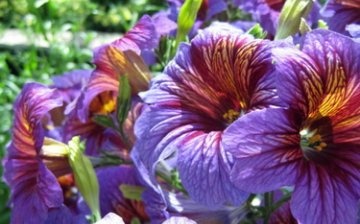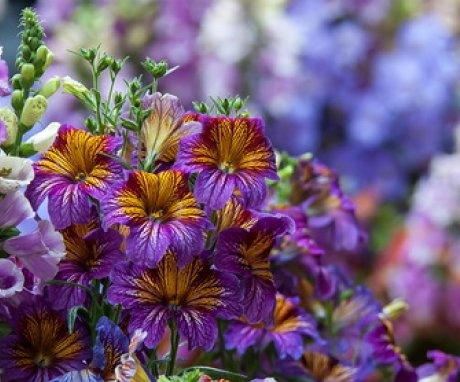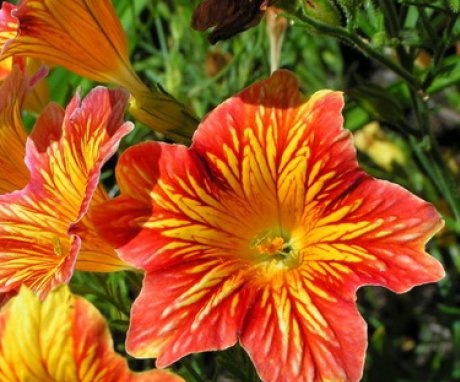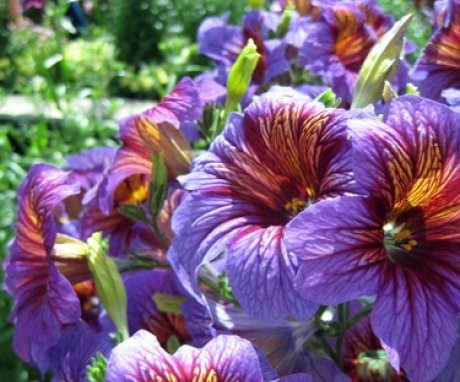Growing salpiglossis by seeds
Every year, with the arrival of spring, lovers of bright and unusual representatives of the flora have to think about how to decorate their garden and surprise others? Habitual petunias and mallows have become so "familiar" and commonplace that they do not amaze with their beauty and do not cause much admiration. An exotic annual plant with the intriguing name salpiglossis will help bring new bright colors to your garden and create a cheerful mood.
Content:
- What is the miraculous salpiglossis flower?
- How to grow salpiglossis?
- How to propagate salpiglossis
- What problems does salpiglossis have?
What is the miraculous salpiglossis flower?
The nightshade family includes not only well-known vegetable crops, such as potato and tomato, but also extraordinarily beautiful decorative flowers salpiglossis. South America is considered the birthplace of this bright and spectacular plant. In these parts, salpiglossis is very common and there are more than 2 dozen of its types.
In our latitudes, only a few types of salpiglossis grow: notched and fragrant. And each species has a variety of decorative forms: Grandiflora, Nana, Superbissima and others. Due to their rainbow color, the flowers are mainly used to decorate small flower beds and for group plantings in combination with chrysanthemums, matrixes, scabioses.
Salpiglossis is valued for its bright lush "caps" of inflorescences, which the plant generously endows with from June to October. Funnel-shaped flowers, as if specially painted with multi-colored paints, can have a palette from pale white to bright purple.
The plant grows up to 70-80 cm high. It has thin straight stems covered with soft fluff. The leaves are arranged in the following order. Depending on the type, they can be solid, pinnately incised or serrated.
How to grow salpiglossis?
Growing salpiglossis is fun and not at all troublesome. The plant can grow normally and bloom profusely on any soil, but prefers soil mixtures enriched with humus and with good drainage. In such a soil, the flower feels great, as evidenced by its lush foliage and large variegated inflorescences.
If the soil clay on your site, add fine sand, humus and peat to it and this will be enough for the comfortable growth of an ornamental plant.
Shaded areas of the garden are best suited for salpiglossis, as the plant does not tolerate abundant sunlight well. It can be planted in the shade of tall bushes or in areas with light partial shade, but not on a wind run. The plant is very fragile and is afraid of gusty winds. So that it does not suffer during bad weather, young shoots are tied to a reliable support.
The plant is painfully tolerant of transplantation. If a place has been chosen for him in the garden, you should not transplant to another site. Salpiglossis roots do not take root well in a new place; if disturbed, the plant may simply die.
How to propagate salpiglossis?
Salpiglossis can be grown using seeds that the plant retains in its oval capsules after flowering. Seeds are sown in the planting soil in mid-spring or late autumn. In one season, you can provide yourself and your friends with seeds for several years in advance, since salpiglossis remains viable for 4-5 years.
Salpiglossis can be grown in seedlings. On the seedlings flower seeds are sown in early March. For this, small clay pots are quite suitable, which, together with the crops, are kept at room temperature until the danger of night frosts has passed. With the onset of warmth, the seedlings are carefully planted in the ground, making sure not to break the fragile shoots. Plants grow very quickly and already in June they begin to delight with flowers of unusual coloring.
When planting salpiglossis in the ground, mineral fertilizers or wood ash should be added to the soil, to which all plants of the Solanaceae family respond well. Plant feeding is done once and only when planting. This is enough for the miracle flower to grow gracefully and feel at home.
What problems does salpiglossis have?
What the plant loves most is moisture, especially on hot days, you need to ensure that there is always moist soil around it. It needs to be constantly loosened and moistened. If the top layer dries up, the flower will wither and it will be difficult to restore it.
Salpiglossis is sensitive to diseases and can be affected by gray rot. The onset of the disease will be signaled by flower petals. During illness, they become lethargic, soft, the color seems to fade and fade.
Salpiglossis does not tolerate winter well. He is not able to withstand frosts in our area, and strong winds create a great danger for him. If the flower disappears over the winter, don't worry, sow seeds and grow new plants.
Despite the capriciousness of the plant, lovers of exotic flowers with great pleasure grow salpiglossis in their garden. The variegated palette of colors brings a special chic to the decorative coloring of the garden and creates a wonderful mood.



